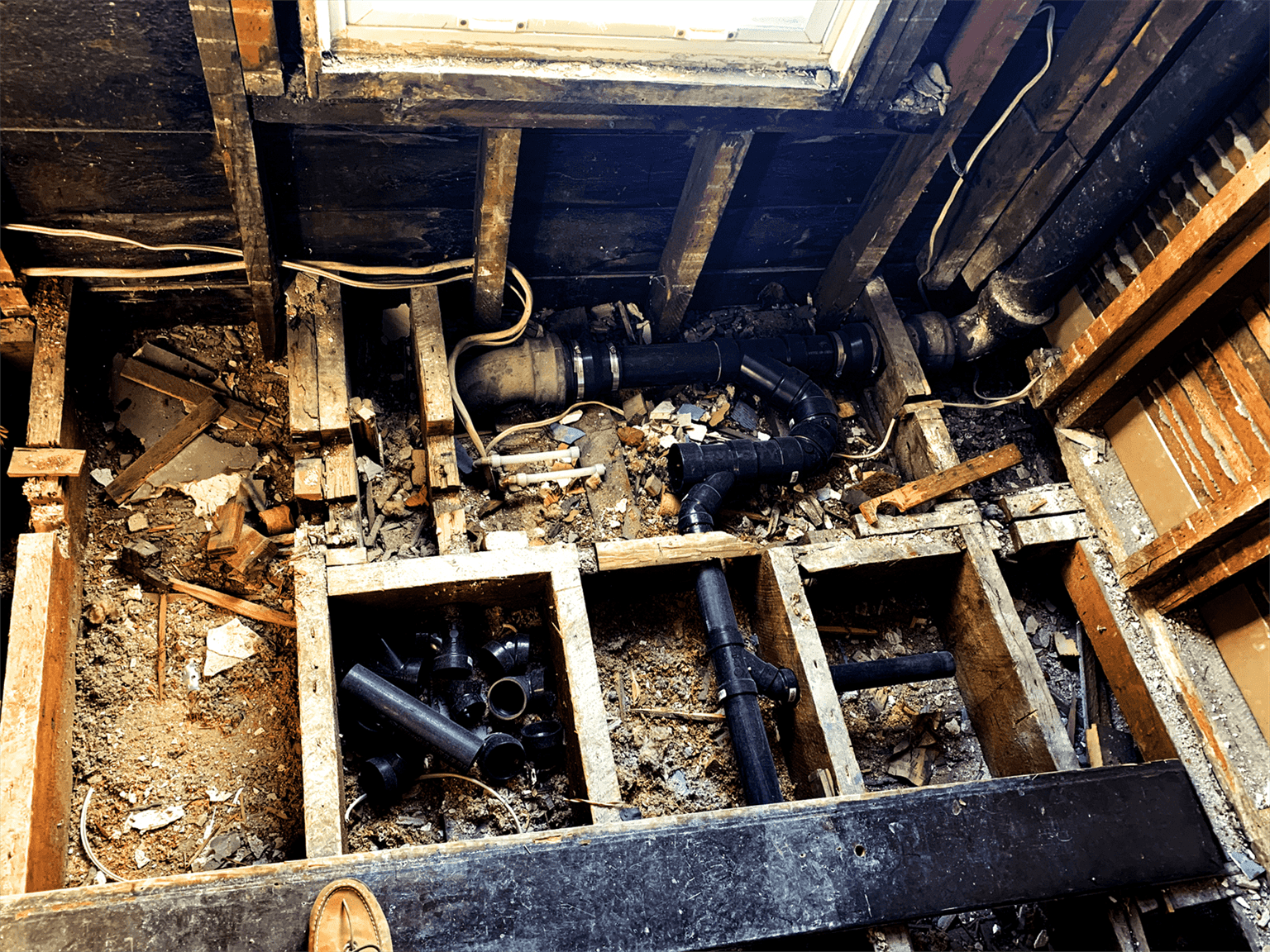Spot Signs of Water Damage in a Prospect Property in 2023

When you think about the most damaging thing that can happen to your property, you might consider earthquakes, fallen tree limbs or vandalism. But, even worse than those, is water damage, not least because the odds of it happening are higher than you think.
Water damage can occur as a result of a plumbing emergency, flooding or heavy precipitation. When it does, it’ll wreak havoc on your property. Water damage is incredibly challenging, time-consuming and costly to repair. It’s important to know whether water has damaged property before you make an investment.
Thankfully, there are some key signs that you can look for to help you identify water damage before you commit to a prospect property.
As well, if a property you are looking at potentially buying has signs of damage due to water or other major issues, you may want to talk to you mortgage broker about looking for a lender that is willing to finance a distressed property. This is because if the damages are bad enough, many lenders may pass on a property even if you see potential to turn it into a worthwhile investment.
So, if you are interested in looking at how lenders approach distressed or damaged properties, click the link below for a free strategy call with our team at LendCity today and we will gladly help you get started.
Identifying water damage at a property
Touring a property in-person will reveal issues and considerations that might not be immediately apparent in an online or print listing, including water damage. While property sellers should always be transparent about water damage, not all of them are. Sellers are eager to show you the highlights of the property such as new countertops or refinished flooring. However, they’ll just as quickly hurry you away from plumbing closets and water spots!
It’s up to you to ensure you’re not going to make an investment in a property that’s been seriously damaged by water. With that in mind, there are several things you can look for to help you determine whether a property has water damage.
Strange smells
Strong mildew, mouldy or musty odours in a property are strong indicators there’s a problem with water damage. Mould and mildew thrive in high humidity and damp materials and often grow inside homes after flooding or water damage. If you smell any of these odours when you’re touring a property, it’s a major red flag that there’s a problem with water damage.
In some cases, mould can be remediated relatively easily. But, there are some situations that warrant major restorative work before the property is considered safe. You should always weigh the benefits with potential costs before you set your sights on rehabbing a property with a mould or mildew issue.
Dark spots on ceilings
Always check walls and ceilings when you’re touring a prospect property to check for signs of water damage. Dark spots or areas with patches of discoloration are major red flags of previous water damage. Also, check for signs of cracking or flaking of drywall to indicate previous water saturation. Make sure to pay attention to these dark spots when you tour a prospect property. Try to inspect the walls and ceilings in each room for signs of water damage.
Discover Residential Property Management With This Step By Step Guide
Signs of leaky plumbing
Any puddles or drips around faucets and plumbing fixtures indicate a recurring problem that could be causing water damage. Some property owners ignore small plumbing issues because they seem insignificant. However, even a small amount of water leaking can do serious damage to materials and surfaces over time.
When you’re touring a property, take the time to inspect plumbing fixtures to ensure there aren’t any clear signs of leaks. Missing even a small junction leak could mean missing a key contributor to unseen water damage.
You can do a quick test to see if the plumbing is leaking. To test this shut off all faucets and then go check the water meter - If it's moving there could be an issue.
Humidity
If you sense increased moisture or mugginess in the air when you enter a property, it’s a sign there’s water collecting somewhere. Unwanted water contributes to increased moisture in the air in a very noticeable way. You should be wary of any properties that feel more humid than normal since they likely have some issues with water.
To help discover humidity, you can bring a humidity sensor to the property. These humidity sensors adjust quickly and will help you determine if there are moisture issues.
Water sounds
If you hear water dripping when all the plumbing fixtures are turned off, it’s a sign that there’s a leak in the plumbing system. This leak might not be immediately visible, but chances are it will do major damage to your property by the time you find it. Oftentimes, these leaks are located deep within the plumbing system, which makes them very hard to find and address without calling in a pro.
Water is a value killer
Taking a closer look at a property before you buy is a smart move for any investor. Sniffing out water damage might take you a bit more time and effort. It’s well worth it in the long run to purchase investment properties you feel confident in. Plus, you’ll avoid the hassle and the headache of remediating or renovating to make that water issue disappear once and for all.
Now, if you are interested in looking at how lenders approach distressed or damaged properties, click the link below for a free strategy call with our team at LendCity today and we will gladly help you get started.
